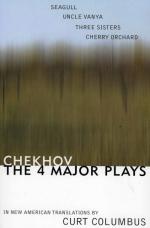|
This section contains 2,070 words (approx. 6 pages at 400 words per page) |

|
Perkins, an Associate Professor of English at Prince George's Community College in Maryland, has published several articles on twentieth-century authors. In this essay, she examines Chekhov's play and his presentation of the artistic temperament.
In Natural Supernaturalism: Tradition and Revolution in Romantic Literature, M. H. Abrams characterizes a recurrent figure in romantic and modern literature—the suffering artist. He notes that the central character in many literary works of the nineteenth and twentieth centuries is "the alienated and anguished artist whose priestly vocation entails the renunciation of this life and of this contemptible world in favor of that other world which is the work of his art." In the nineteenth century, this figure first emerged in the romantic poetry of authors like Samuel Coleridge, William Wordsworth, Lord Byron, and Percy Shelley. At the turn of the century, playwright Anton Chekhov employed this dominant image in The...
|
This section contains 2,070 words (approx. 6 pages at 400 words per page) |

|




